
Fine Classical, Instrumental, and Specialty Recordings
Label: Pomegranate Item Number: POM-CD-1926 Format: CD Year Recorded: 2009 Noesis: 19th Century Masterworks for Two Guitars SoloDuo Matteo Mela - Guitar Lorenzo Micheli - Guitar
SoloDuo - Two Guitars  As SoloDuo, Matteo Mela and Lorenzo Micheli have performed throughout Europe, Asia, the USA, Canada and Latin America, and have been acclaimed everywhere - from New York's Carnegie Hall to Seoul's Sejong Chamber Hall and Vienna's Konzerthaus - as one of the best ensembles ever heard. About one of their performances, The Washington Post wrote: "the duo's playing was nothing less than rapturous - profound and unforgettable musicianship of the highest order." In addition to classic, romantic and modern repertoire, Matteo and Lorenzo - joined by lutenist Massimo Lonardi - enjoy exploring the early literature for baroque guitar and theorbo. Together, Matteo and Lorenzo have recorded Francois de Fossa's Three Quartets, op. 19 (Stradivarius 2004), a CD of 17th century Italian music for baroque guitar, archlute and theorbo ("La Suave Melodia", Stradivarius 2008), "Solaria", an anthology of 20th century masterpieces for two guitars (Pomegranate 2007), the Duos Concertants by Antoine De Lhoyer (Naxos 2007), a collection of chamber works by Mauro Giuliani (Amadeus 2008), a collection of 19th century pieces for two guitars ("Noesis", Pomegranate 2009), the Sonatas of Ferdinand Rebay (Stradivarius 2010), the Arias and Cantatas of Alessandro Scarlatti (Stradivarius 2012) and the 24 Preludes and Fugues by Mario Castelnuovo-Tedesco (Solaria 2012), as well as a dozen solo recordings on the labels Naxos, Brilliant Records, Kookaburra, Mel Bay, and Stradivarius. Matteo resides in Geneva, Switzerland, where he teaches at the Conservatoire Populaire. Lorenzo lives in Milan, Italy, and teaches both at the CSI Conservatory in Lugano, Switzerland, and the Conservatory of Aosta, Italy. For further information, please visit www.soloduo.it, www.matteomela.it and www.lorenzomicheli.com Matteo Mela - Guitar Lorenzo Micheli - Guitar Following the release of Solaria, in March 2007, we began to toy with the idea of taking a step back in time, moving our focus onto the late Classical and Romantic era and identifying a group of works suitable for representing the great creative ferment which in the European capitals of the early nineteenth century - first of all, of course, Vienna and Paris - saw in the guitar duo a vehicle for the widespread diffusion of musical culture and a powerful means of expression. In this way, Noesis was born as a "twin" disc of Solaria, of which ideally it represents the continuation. Exactly like Solaria, Noesis is first and foremost an invitation to listening and to re-discovery, by means of a varied programme of genres and composers. What do Giuliani and Coste, Mertz and Lhoyer have in common? Not their personal histories, nor their peculiarities of style, nor even the chronological details of birth and death. Something less and at the same time something much more than all this. Because they, together with a few others who for reasons of space are not represented in this anthology, are the names who have written some of the most significant pages of literature for two guitars of the nineteenth century: names known and celebrated in all the continent, and works that accompanied the now dominant European bourgeoisie as a soundtrack through decades of revolutions, restorations and epoch-making socio-economic changes. Mauro Giuliani, who originated from the southeast of the Italian peninsula, moved to Vienna in 1806; in the fourteen years that he spent there, he gained extraordinary fame and success. His return to Italy in 1819, for reasons that still today are rather unclear, marked the beginning of his downward path as an artist, which would conclude with his death in poverty at the age of only 48 years. His Grandes Variations Concertantes, op. 35, published in Vienna in 1812, exemplify admirably the knowledge of the art of the variation: the perfect clockwork mechanism of a composer who at every concert and at every public performance renewed the myth of the virtuoso - and in so doing his own myth. A brief and ambiguous introduction, which moves between minor and major, raises the curtain on a theme, perhaps an original theme by Giuliani, without melodic or harmonic elements to make it interesting or, still less, identifiable. But it is just this dull "anonymity" that ensures that this theme lends itself magnificently to being the subject of transformations, diminutions and embellishments. The metamorphosis into six variations has quite a regular construction: in section a of each of the variations, the rhythmic unity between the two guitars is always perfect; while in section b, the construction is more theatrical, based on dialogue and opposition. Variations, by thirds, by quadruplets of semi-quavers, by sixths and by triplets, follow one another without ever affecting the fundamental harmonic structure of the theme - with the exception, to a lesser extent, of the fourth variation, which evokes some elements from the introduction (for example, the broken ascending octaves), and the spectacular final variation, constructed on the octave movement of the two guitars. A long coda based on the alternation of bravura interventions by the two guitars concludes, at the climax of a dizzying chromatic scale, on a double tremolo: here a minor second interval expands more and more until it liberates all its energy on the second inversion of a tonic chord followed by a perfect cadence. The steep descent of the arpeggio of the first guitar signals the end of a piece, which constitutes an almost unparalleled example of all the technical and instrumental advances of the virtuoso guitarists of the era. Simultaneous octaves similar to a fanfare introduce, with a strong dotted rhythm, the first of the Tre Polonesi Concertanti, published posthumously in Milan around 1836. A majestic character not devoid of irony, the strongly syncopated rhythm, the presence of a trio which is always cantabile, and the da capo: all give a notable underlying unity to three musical jewels which sparkle in the sober perfection of their writing, their formal clarity and their quality of melodic invention. Not many years separate Giuliani and the guitarist and composer Antoine de Lhoyer, a native of Clermont-Ferrand: however, as far as we know, their personal and artistic paths never crossed. On the fall of Napoléon, after eventful years spent in various places in Europe, Lhoyer - a soldier by profession, first in the Gardes du Corps du Roi, then in several counter-revolutionary corps - returned to France, and took up service again in the army of the King. The stability for which he longed, however, was destined to remain a mirage: the new position forced the composer to move continuously from one remote French garrison to another, thus creating a situation of isolation and uncertainty that clearly must have constituted an obstacle to the development of his musical creativity. Right from the octaves in unison which open the first movement, the Duo Concertant in A minor by Lhoyer appears charged with an extreme dramatic tension, which cannot be relaxed even in the C major - slightly brighter but marked rhythmically - of the second theme. A very intense orchestration and a perfect equilibrium in the subdivision of the parts are the unmistakable trademark of all the composer's important works for two guitars. The central movement is a tranquil romanza in C major consisting of slow and measured gestures, to which the strong dissonance of the opening appoggiatura gives a vaguely eccentric character. The last reprise of the romanza dies on a brief and gloomy C pedal: nothing leads one to expect the stormy atmosphere of the final Rondo, in which, among surprising coups de théâtre, unexpected pauses and unpredictable melodic insertions, Lhoyer succeeds in obtaining an incredibly wide dynamic range through the use of broken sixths, eighths and tenths. Napoléon Coste was a pupil of Fernando Sor; like Lhoyer, he was forced by economic circumstances to combine his musical activity with that of clerk, in spite of the reputation he enjoyed in Paris starting from the 1830s. His catalogue, the fruit of a long and peaceful life, includes about fifty numbered works, mostly for solo guitar (but there are also ventures into the chamber music field), and also a handful of works without opus numbers, among which this Grand Duo pour deux guitares égales et concertantes, one of the very few works for two guitars that can be attributed to him. The only surviving manuscript of the Grand Duo, a non-autographic copy difficult to date, is preserved in the Royal Library of Copenhagen. The study of the manuscript has raised and continues to raise legitimate doubts on the reliability of the text that has come down to us, since the distribution of the musical material between the two instruments, rather bizarre and sometimes almost illogical, would lead us to hypothesize corrections and modifications by an anonymous copier. The numerous doubts on the text, however, do not hide the substance of the piece, which displays an unusual richness of ideas right from the vigorous beginning of the first movement, an Allegro in which constant restlessness and a strong rhythmic mobility dominate the music until the recapitulation, which - after a literal revisiting of the initial minor key - abruptly changes towards a soft and cantabile E major. Lush and generous, the first movement of the Grand Duo is a tapestry of which the rhythmic and harmonic threads contribute to forming a melodic design of great beauty. The second movement is an Andante in C major, in two parts, with a barely described theme (more than anything else, a harmonic path subdivided between two guitars) and a long and thoughtful coda of 14 bars. A simple and graceful swaying theme in E minor opens the Barcarolle, followed by a central section in E major with a nobler and more stately progress. Crossed chromatic scales (the first guitar descends, while the second ascends) lead us back to the minor mode and to the very brief return of the theme, which precedes a coda in which, in the romantic feeling of some of the descending chord progressions, Coste achieved heights of sublime expressiveness, before concluding with a very brief final Allegro (little more than two minutes) which is fluent and vivid. In 1856, Napoléon Coste gained the most important recognition of his career: the second prize in the Brussels guitar composition competition. Before him on the podium there had been a Bohemian guitarist who died only a few weeks before the proclamation, Johann Kaspar Mertz. This guitarist, whose biographical details substantially remain to be investigated, was born in Pressburg (present-day Bratislava) in 1806 and - like Giuliani many years before - found in Vienna, towards 1840, the ideal launching pad for his brief but successful career as a concert performer. In the Trauerlieder, Mertz, a composer who, sometimes lacking order and precision in his writing, is often criticized for his lack of sense of form, throws away all his prolix and mannered rhetoric, refines his style by removing certain ingenuities in rhythm and harmony which are frequent in many of his works (with a few, splendid, exceptions like the justly famous Bardenklänge) and adopts a style which is dignified but touching, with pathetic elements and romantic impulses set in a balanced formal framework. These three funeral songs, which envisage the use of a guitar tuned a minor third above (or of a normal guitar with a capotasto on the third fret), have been restored to us by a manuscript preserved in the Boije Collection of the Music Library of Sweden. Am Grabe der Geliebten, an Adagio with dark tones in C Minor, has a mournful and resigned progress interspersed with rays of luminous softness, as in the modulation in E flat major. Ich denke Dein is more serene and luminous, with its initial nostalgic statement based on a sequence of crotchets and minims. Like the other two Lieder, Ich denke Dein is divided into three very distinct sections, with a long central fluid, flowing episode and a literal revisiting of the first part. The conclusion is serene, but the appearance of the relative minor in the finale, after we have explored all the notes of the major triad, sows the seeds of doubt and uncertainty, leaving an ambiguous taste. Trauermarsch, a mournful funeral march in D minor full of lights and shades, with a central parenthesis in a light D major which relieves us for a moment above the suffering, closes a triptych which takes its place among the most admirable pieces of all the romantic repertory for the guitar: pieces pierced by pain and rebellion, by an atmosphere of desperate renunciation and at the same time by a sort of indefinable Sehnsucht. Noesis represents an act of homage and love towards these composers and their works: our viewpoint and our effort to understand the guitar repertory in that indistinctly-defined common territory in which classical forms and stylistic elements, and the restless urges of Romanticism, are able to communicate. Lorenzo Micheli October 2008
Label: Pomegranate Item Number: POM-CD-1926 Format: CD Year Recorded: 2009 19th Century Masterworks for Two Guitars, by Coste, Mertz, Lhoyer, and Giuliani. "SoloDuo's Carnegie Hall concert was one of the more memorable concerts of the Weill season. It is hard to say what left more of an impression: their remarkable blend, their sublime artistry or their impeccable technique. Do not miss a chance to hear them." The New York Concert Review | |||||||||||||||||||||||||||||||||||||||||||||||
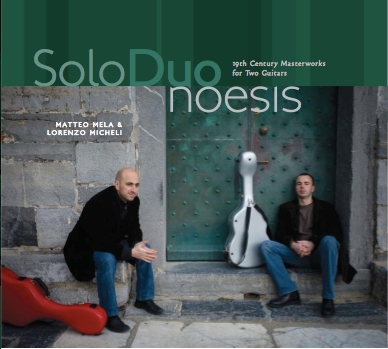
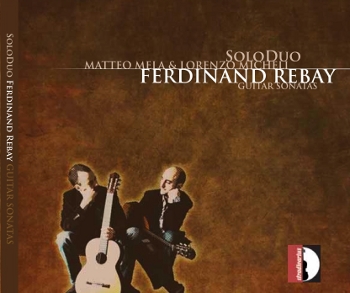
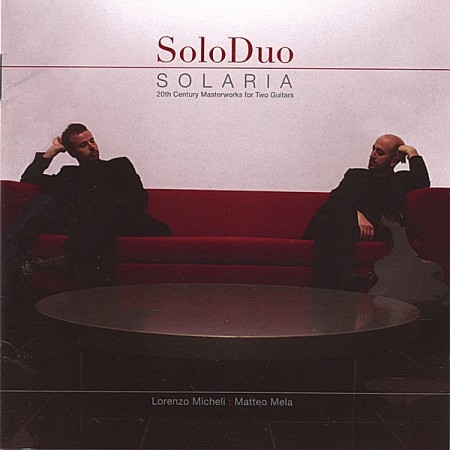
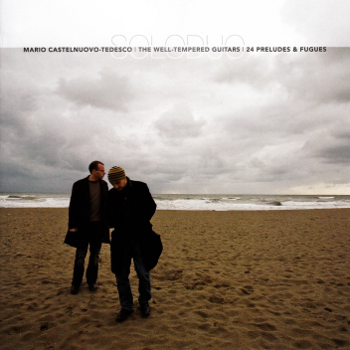
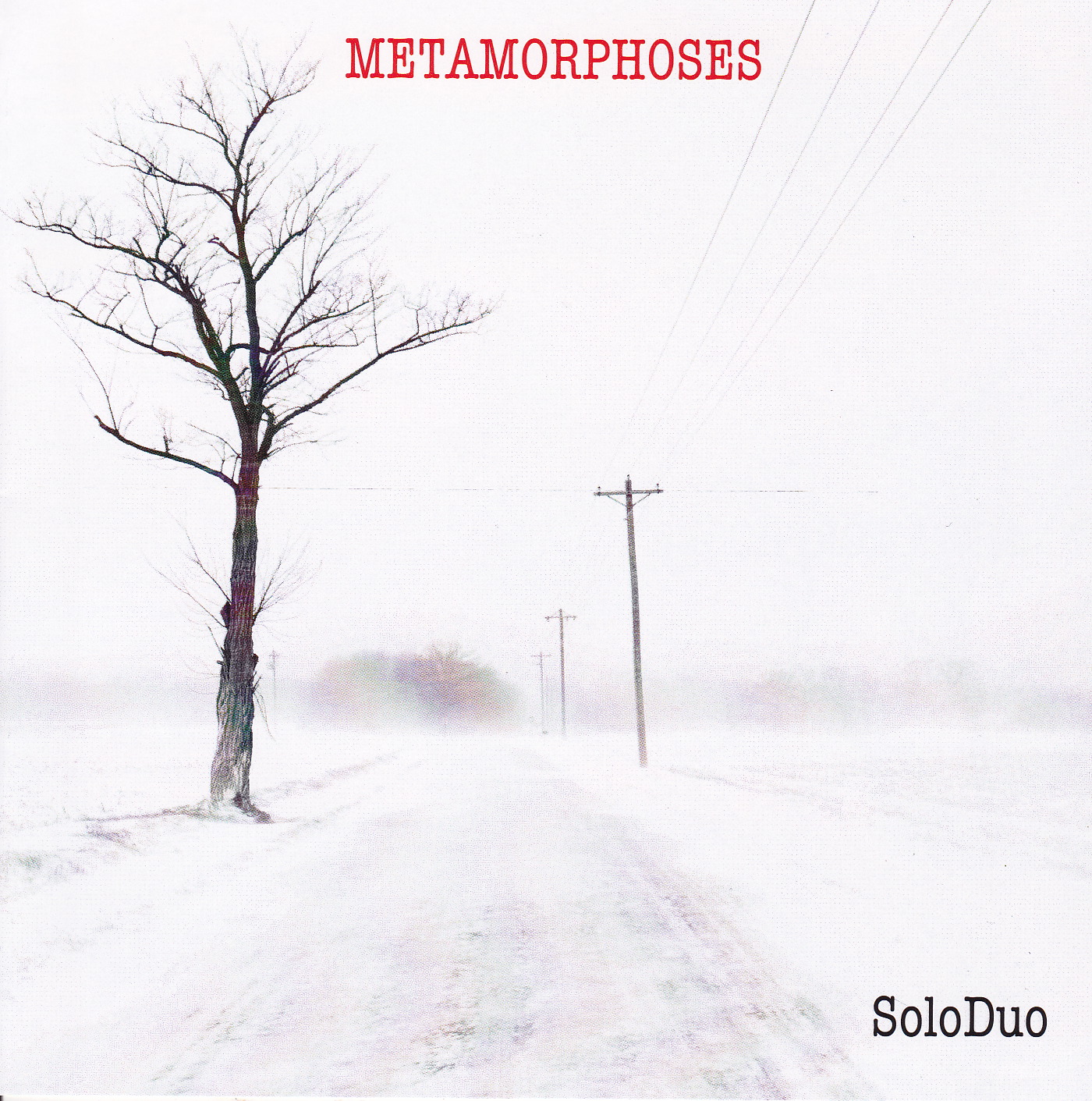
 Follow Us on Twitter
Follow Us on Twitter Follow Us on Instagram
Follow Us on Instagram Visit Our Partner Soundset Recordings
Visit Our Partner Soundset Recordings